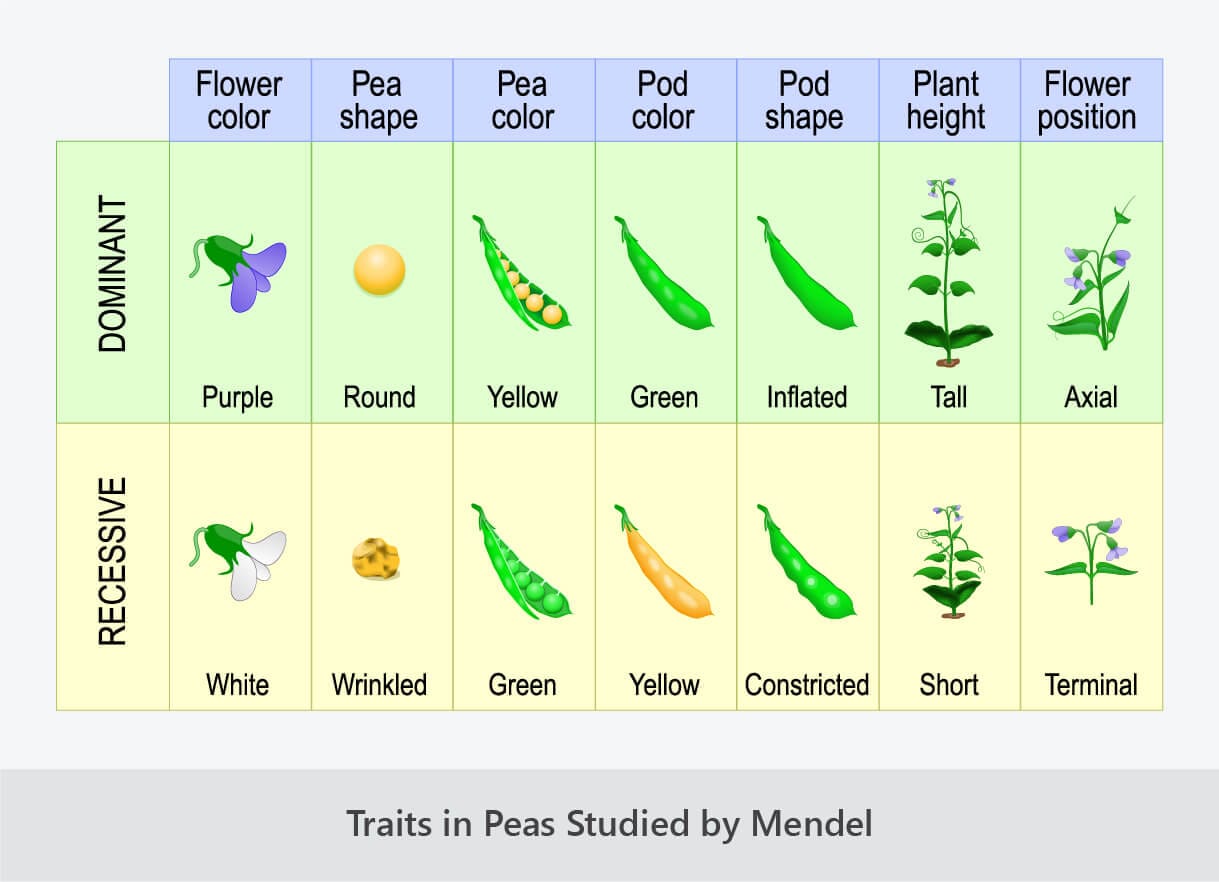Why Were Sweet Peas the Stars of Early Genetics Experiments?
You know how crosswords sometimes have those clues that make you go, “Hmm, that rings a bell…”? Well, back in June 2024, the New York Times crossword had one of those clues. It talked about “plants used in early genetics experiments,” and the answer was sweet peas. Now, we’ve all heard about Gregor Mendel and his famous pea experiments, but it turns out sweet peas were pretty important in the world of genetics, too! Unveiling the noble gas beneath krypton on the periodic table, embark on a journey of scientific discovery by clicking noble gas below krypton on the periodic table.
Sweet Pea Advantages: Nature’s Tiny Genetic Marvels
But why sweet peas? What made them the stars of early 20th-century genetics research? Imagine you’re a scientist trying to understand how traits are passed down. You’d want an organism that’s easy to study and replicates quickly, right? Sweet peas fit the bill perfectly:
- Phenotypic Diversity: Their flowers boast a vibrant palette of colors and come in various shapes. This variety isn’t just pretty; it’s a goldmine for scientists tracking how traits are inherited.
- Controlled Breeding: Sweet peas can self-fertilize, which allowed researchers to produce pure-breeding lines and study specific traits in isolation. However, they can also be cross-pollinated to create hybrids, enabling scientists to study how traits combine and reappear across generations.
- Rapid Growth: Compared to some plants that take their sweet time, sweet peas have a relatively short generation time. This swift growth allowed researchers to observe multiple generations in a single growing season, speeding up research significantly.
Key Players and Discoveries: Beyond Mendel’s Peas
- Reginald Punnett: This pioneering geneticist extensively used sweet peas to confirm and expand upon Mendel’s theories. He even developed the “Punnett square,” a tool still used today to predict the probability of offspring inheriting specific traits.
- William Bateson: A strong advocate for Mendel’s then-radical ideas, Bateson collaborated with Punnett and shared a passion for sweet peas. He’s credited with coining the term “genetics,” forever linking his name to this field of study.
Impact and Legacy: From Sweet Peas to Modern Genetics
The research conducted on sweet peas did more than just confirm Mendel’s laws; it added layers of complexity to our understanding of inheritance. These seemingly simple flowers helped unveil:
- The intricate dance of dominant and recessive alleles.
- The concept of genotypes (the genetic makeup) and phenotypes (the observable traits).
- The foundation for modern genetics, with applications in fields as diverse as medicine, agriculture, and even forensics.
Unlocking the Legacy: Gregor Mendel and His Peas
Gregor Mendel, a name synonymous with genetics, wasn’t always a celebrated figure. This Austrian monk, conducting experiments in the quiet confines of a monastery garden in the 1800s, was about to revolutionize our understanding of heredity. His tool of choice? The humble pea plant (Pisum sativum).
Why Peas? The Perfect Partners in Scientific Discovery
Mendel didn’t choose peas randomly. They offered several advantages for studying inheritance:
- Easily Identifiable Traits: Pea plants display distinct variations in easily observable traits like seed shape (round or wrinkled), seed color (yellow or green), flower color (purple or white), and more. This made tracking inheritance patterns straightforward.
- Controlled Pollination: Peas can self-fertilize, allowing Mendel to create purebred lines for his experiments. He could also easily control cross-pollination between specific plants to create hybrids.
- Rapid Growth: Like sweet peas, pea plants have a relatively short generation time, which enabled Mendel to study multiple generations and gather substantial data within a relatively short timeframe.
Mendel’s Laws of Inheritance: The Foundation of Modern Genetics
Through meticulous observation and analysis, Mendel unveiled two fundamental laws that govern inheritance:
- Law of Segregation: Each individual carries two alleles (versions of a gene) for each trait. During the formation of gametes (sperm and egg cells), these alleles separate, so each parent contributes only one allele to their offspring.
- Law of Independent Assortment: Alleles for different traits are inherited independently of each other. For example, the inheritance of flower color doesn’t influence the inheritance of seed shape. (It’s important to note that this law has exceptions, as we now know that genes located close together on the same chromosome tend to be inherited together.)
Mendel’s legacy extends far beyond his pea plants. His groundbreaking work, once largely ignored, was rediscovered in the early 1900s, ushering in the era of modern genetics. His principles are applied in fields ranging from medicine and agriculture to personalized healthcare and even criminal justice. Experience the ancient healing practices of oil pulling gurunanda, where tradition meets modern wellness.
Beyond the Pea: Unveiling the Plants That Shaped Genetic Understanding
While Mendel’s peas rightfully hold a prominent place in the history of genetics, a fascinating cast of other plants has also played pivotal roles in unraveling the secrets of heredity.
Tobacco (Nicotiana tabacum): A Resilient Research Subject
In the early 20th century, scientists sought to determine if Mendel’s laws, discovered through meticulous pea plant observations, held true for other species. Tobacco, with its large size and readily observable traits, quickly became a favorite among geneticists.
- Disease Resistance Studies: Tobacco’s susceptibility to various diseases made it an ideal candidate for studying disease resistance mechanisms in plants. This research has had far-reaching implications for developing disease-resistant crops, a critical aspect of ensuring global food security.
- Environmental Influence: Researchers used tobacco to investigate how environmental factors could influence gene expression and inheritance patterns. These early studies laid the groundwork for understanding how the environment can interact with genes to shape an organism’s traits.
Corn (Zea mays): Unmasking “Jumping Genes”
Corn, a staple crop for millennia, has been central to groundbreaking genetic discoveries. Its large chromosomes and diverse physical traits make it a geneticist’s dream.
- Barbara McClintock and Transposons: This pioneering geneticist, using maize as her model organism, made a revolutionary discovery in the 1940s – “jumping genes,” or transposons. These mobile genetic elements could move around within a plant’s genome, challenging the prevailing view at the time that genes were fixed in their locations on chromosomes.
- Impact on Genetic Engineering: McClintock’s work, initially met with skepticism, earned her the Nobel Prize in Physiology or Medicine in 1983. It revolutionized our understanding of how genomes are structured and regulated and paved the way for modern genetic engineering techniques.
Arabidopsis thaliana (Thale Cress): The Lab Rat of the Plant World
Don’t let its small size and unassuming appearance fool you; Arabidopsis thaliana, a seemingly insignificant weed, has become a superstar in the world of plant genetics.
- Model Organism: Arabidopsis possesses several characteristics that make it a model organism: a small, easily sequenced genome, a rapid life cycle, and the remarkable ability to be grown in controlled laboratory environments.
- Unraveling Plant Development: This tiny plant has been instrumental in unraveling the genetic mechanisms behind various plant processes, including:
- Growth and Development: Scientists have used Arabidopsis to identify genes involved in seed germination, leaf formation, flowering time, and other crucial stages of a plant’s life cycle.
- Responses to Environmental Stress: Arabidopsis has helped researchers understand how plants respond to environmental stresses like drought, salinity, and extreme temperatures – knowledge that’s crucial for developing crops that can thrive in changing climates.
From Garden to Lab- How Early Plant Genetics Transformed Our World
The journey of plant genetics began with simple observations in gardens and fields, driven by human curiosity about the natural world. Over centuries, these humble beginnings have given rise to a scientific revolution, transforming our understanding of life itself.
Mendel’s Legacy: A Foundation for Modern Science
Gregor Mendel’s pea plant experiments, once largely unknown, laid the foundation for the entire field of genetics. His meticulous observations and groundbreaking discoveries revealed the fundamental principles of inheritance, demonstrating that traits are passed down from parents to offspring in predictable patterns.
Beyond the Garden Gate: The Rise of Laboratory Genetics
While early observations were crucial, the development of new technologies propelled plant genetics forward:
- Microscopy: The invention and refinement of the microscope allowed scientists to peer into the cellular world, observing the structures involved in inheritance, like chromosomes, for the first time.
- Staining Techniques: New staining techniques made it possible to visualize these tiny cellular structures in greater detail, revealing their organization and behavior during cell division.
- DNA Sequencing: The advent of DNA sequencing technologies in the late 20th century marked a turning point. Scientists could now decode the genetic blueprints of organisms, including plants, unlocking a treasure trove of information about their traits, evolutionary history, and potential.
The Impact: A Legacy of Innovation
The knowledge gained from garden observations and laboratory research has had a profound impact on our world:
Agriculture: Plant genetics has revolutionized agriculture, leading to the development of crops with:
- Higher Yields: Feeding a growing global population depends on increasing crop productivity. Genetic improvements have resulted in significant yield increases for staple crops like rice, wheat, and maize.
- Enhanced Nutritional Content: Genetic modification techniques have allowed scientists to develop crops fortified with essential vitamins and minerals, addressing nutritional deficiencies in many parts of the world. For example, “Golden Rice,” genetically engineered to produce beta-carotene, a precursor to vitamin A, has the potential to combat vitamin A deficiency blindness.
- Disease and Pest Resistance: Genetic approaches are crucial for developing crops that can withstand the constant onslaught of pests and diseases. Disease-resistant crops reduce the need for pesticides, benefiting human health and the environment.
Medicine: The study of plant genetics has yielded valuable insights for medicine, contributing to:
- Drug Discovery: Many medicines are derived from plants, and understanding their genetic makeup helps scientists identify and synthesize beneficial compounds.
- Understanding Human Diseases: Research on plant genetics can provide insights into human diseases. Some plants serve as model organisms for studying genetic disorders that affect both plants and humans.
Conservation: Genetic analysis is becoming increasingly important for conservation efforts. Scientists use genetic techniques to:
- Assess Genetic Diversity: Genetic diversity is essential for the long-term survival of species. Analyzing the genetic makeup of plant populations helps conservationists understand their vulnerability to environmental changes and develop strategies to protect them.
- Identify Endangered Species: Genetic tools can be used to identify and differentiate between endangered species, even when physical differences might be subtle. This is crucial for enforcing conservation laws and preventing illegal trade.
The Legacy of Early Plant Genetics- Modern Applications and Future Implications
The early pioneers of plant genetics, working with simple tools and a boundless sense of wonder, could scarcely have imagined the far-reaching impact of their discoveries. Their legacy lives on in the fields, laboratories, and on our dinner plates.
A Foundation for Food Security
As the global population continues to grow, the demand for food will only intensify. Plant genetics will play a pivotal role in meeting this challenge by developing crops that are:
- More Productive: Increasing yield potential to produce more food from the same amount of land is essential for feeding a growing planet.
- More Nutritious: Enhancing the nutritional content of crops can help address malnutrition and micronutrient deficiencies, improving global health outcomes.
- More Resilient: Climate change poses significant challenges to agriculture, bringing unpredictable weather patterns, droughts, floods, and the emergence of new pests and diseases. Developing crops that can withstand these stresses is crucial for ensuring a stable food supply.
Tools for a Sustainable Future
Plant genetics isn’t just about increasing food production; it’s also about doing so sustainably. By harnessing the power of plant genetics, researchers are working to develop crops that:
- Require Fewer Resources: Crops engineered to use water and nutrients more efficiently can help conserve precious resources and reduce the environmental footprint of agriculture.
- Reduce Reliance on Pesticides: Pesticide use has well-documented negative impacts on human health and the environment. Developing pest-resistant crops is essential for reducing our dependence on these harmful chemicals.
- Sequester Carbon: Plants naturally absorb carbon dioxide from the atmosphere through photosynthesis. Some researchers are exploring ways to enhance this process, using plants as a tool to mitigate climate change.
Ethical Considerations and the Path Forward
The rapid advancements in plant genetics, particularly in genetic engineering, also raise important ethical considerations. As we delve deeper into manipulating the genetic blueprints of life, it’s crucial to engage in thoughtful discussions about:
- Unintended Consequences: Carefully assessing the potential ecological impacts of genetically modified crops is essential to avoid unintended harm to ecosystems.
- Access to Technology: Ensuring that the benefits of plant genetics research are accessible to all, particularly farmers in developing countries, is crucial for promoting global food security and equity.
- Transparency and Public Engagement: Fostering open and transparent dialogue with the public about the potential benefits and risks of genetic engineering is essential for building trust and making informed decisions about the future of our food.
Plant genetics, born from curiosity and nurtured by scientific exploration, stands as a testament to human ingenuity and our enduring fascination with the natural world. As we continue to unravel the complexities of plant life, we unlock the potential to address some of humanity’s greatest challenges and create a more sustainable and equitable future for all.
- Crypto Quotes’ Red Flags: Avoid Costly Mistakes - June 30, 2025
- Unlock Inspirational Crypto Quotes: Future Predictions - June 30, 2025
- Famous Bitcoin Quotes: A Deep Dive into Crypto’s History - June 30, 2025
















